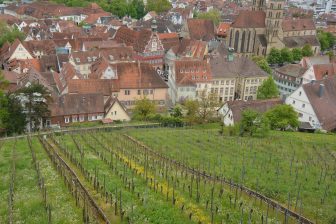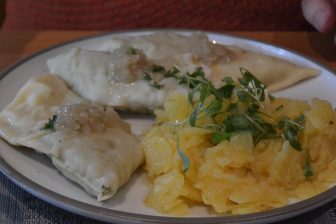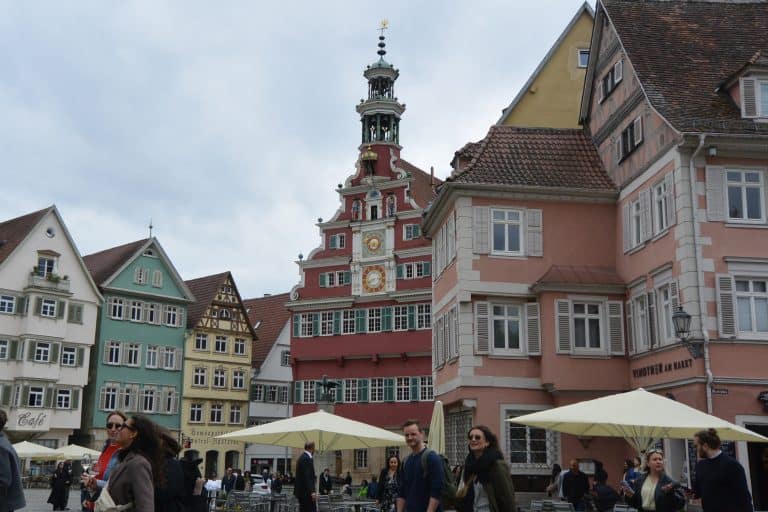
[Apr. 2025] After enjoying the view from the hilltop in Esslingen am Neckar, Germany, our next destination was the Rathaus.
In Germany, a Rathaus isn’t a rat house, but a town hall.
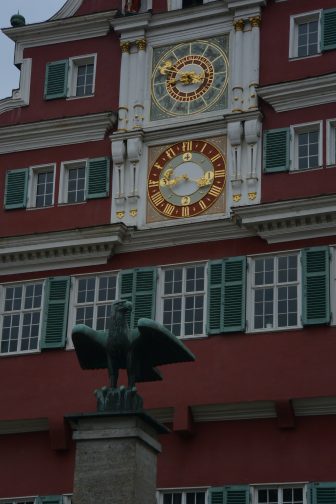
It faces the market square, where the market is held every Tuesday and Friday morning.
We visited on a Friday, but it was afternoon, so there was no sign of the market.
The Rathaus was originally built in the 1420s.
It’s a typical medieval half-timbered house.
This type of half-timbered architecture is called a Fachwerk.
It’s a historic building that survived the destruction of World War II.
It’s fitted with an astronomical clock, and apparently a figure appears every hour.
We didn’t see it, though.
It’s apparently possible to tour the interior, but when we went, a wedding was in progress and we couldn’t enter.
The couple appeared to be of Turkish descent.
Since it’s the city hall, people of all religions or cultural backgrounds can get married here.
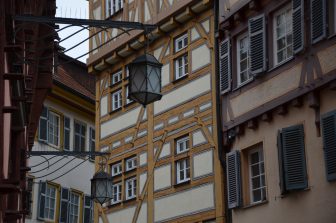
After a little research, I found out that around 10% of Esslingen’s population is of Turkish descent.
Apparently, there was a guest worker policy in place between the 1960s and 1970s, which actively welcomed foreign workers.
Among the immigrants who took advantage of this were Turks.
Many of them settled in Esslingen, near the industrial city of Stuttgart, in search of work.
Today, there are many of their children and grandchildren, and they are now German citizens.
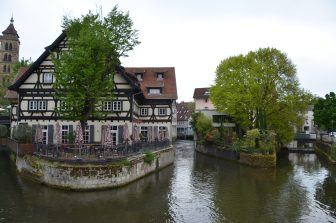
However, even if nationality changes, religion, domestic language, and customs do not easily change, so immigrants are easily recognizable at a glance, as women often wear headgear.
This isn’t just a German thing, but something you see all over the world.
Leaving here, our final stop was a district known as Klein-Venedig (Little Venice).
It’s a beautiful place, with half-timbered houses lined up along the tributaries of the Neckar River and artificial waterways.
There was also a waterwheel.
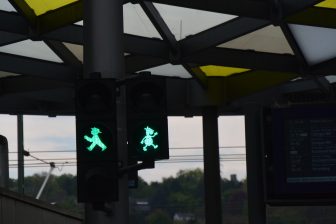
Apparently, this kind of waterwheels were used for flour milling, tanning, and metalworking.
And that concludes our tour of Esslingen am Neckar.
Oh, yes, we saw a familiar Ampelmann here.
Ampelmann is a traffic light sign.
I thought it was something from the former East Germany, but perhaps it’s spread nationwide.


